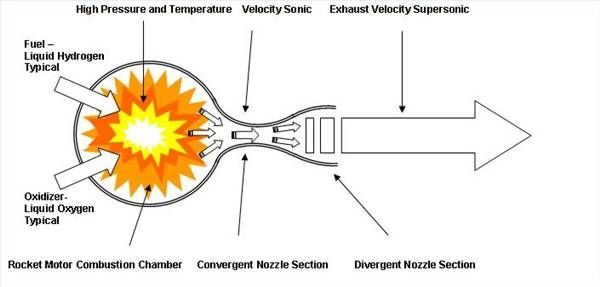Page 1 of 2
Trying to post again.
Posted: Fri Oct 07, 2016 12:56 pm
by ronm
If a port "chokes" at 28" at a certain CFM & FPS on a flow bench how can/does it not choke on a running engine at a higher rate of flow than a flow bench can produce? Thanks, Ron
Re: Trying to post again.
Posted: Fri Oct 07, 2016 3:37 pm
by storm
What exactly do you mean by choke?
Engines don't actually run at 28" they run at various depressions and they have complete inlet and exhaust tracts attached while they are running. When running the exhaust actually helps to "suck" fresh inlet charges into the cylinders which probably helps to alleviate any "choke".
You may want to consider changing the title of this thread as it isn't at all descriptive of the question?
Re: Trying to post again.
Posted: Fri Oct 07, 2016 3:48 pm
by ronm
Found it. Thanks for your reply. The term choke is used by several well known cylinder head people in the States. They say in essence the flow is slowed or reduced after a certain point. ie, ""choked". Their readings are in cfm and FPS at certain CD's. Trying understand how it won't "choke" at those same cfm & FPS in a running engine. Thanks Ron
Re: Trying to post again.
Posted: Sat Oct 08, 2016 3:08 am
by storm
Ok now I get where you are coming from. Let's just be clear that "choke" is often used incorrectly. What "choke" actually means is the point at which a port cannot flow anymore due to restrictions imposed by the ports design (cross sectional area, total size, obstruction locations).
Imagine you are doing a lung capacity test (remember an engine is just a mechanical lung) and you are trying to force all the air in your lungs out through a drinking straw. Because you cannot blow at higher pressures than say (just pulling a number out of the air) 10" you can only get the straw to flow 50 cfm. If you could blow at 15" you could get the straw to flow at 75 cfm. Now change to a bigger 1" plastic pipe (like they actually have in these tests) and blow again you will be able to flow more at both pressures. Now the important thing to note here is the straw will only flow 50 cfm at 10" it will never flow anymore than this because it is physically impossible but it can flow 75 cfm at 15". Why? because there is more pressure behind it.
Engines, as already mentioned, don't run at 28" they run at a wide variety of pressures and this is to a certain extent how they overcome "choke". However, and the old VW Beetles are a great example of this, the important thing is the entire intake and exhaust system. The original VW Beetles wouldn't go any faster than 60 mph or approximately 100 kmh, why? because the inlet manifold/carb simply wouldn't flow enough to let the engine produce enough power to break the artificial speed limit.
Re: Trying to post again.
Posted: Sun Oct 09, 2016 12:11 am
by ronm
Now that is a great explanation. Thanks so much for you answer. Make very good sense.
Re: Trying to post again.
Posted: Sun Oct 09, 2016 5:47 pm
by Tony
There is also the problem of the air path going sonic.
Once airspeed reaches the speed of sound, no further flow increase is possible
no matter how high the pressure differential.
This is called choked flow, or critical flow.
Google "sonic nozzle" for a better explanation.
Its the basis behind designing rocket engine nozzles.
You can have massive pressure, thousands of psi of pressure inside a rocket engine combustion chamber.
The pressure is maintained inside the combustion chamber, because the exhaust nozzle is designed for choked flow, holding the very high pressure inside which creates the forward thrust.
The thrust comes from very high pressure built up inside the engine, not from the nozzle as most people think.

Re: Trying to post again.
Posted: Sun Oct 09, 2016 9:47 pm
by Adrian
What happens at sonic speeds is fascinating stuff.
A nerdy newbie aside: While calibrating my PTS bench, I wondered if our sharp edge calibration plates could be pushed into a choked condition, even partial. Intuitively, I thought no because you'd need more length in the 3rd dimension. This turned out to be the case - flow will continue to rise until the pressure difference sees a perfect vacuum on one side. (No choking occurs, I guess that's one of the points of a thin plate sharp orifice!) But need supernova loads of energy to get there! A mathematical singularity much like the one that people worried about when the switch was flipped on the Large Hadron Collider! There's always one particle left over.

Re: Trying to post again.
Posted: Sun Oct 09, 2016 10:20 pm
by ronm
Worked on a few rocket motor programs. Solid and liquid. We were shown movies back in '63 showing a flow tank and how they used hydrogen bubbles to determine the convergent and divergent angles on either side of the throat. Interesting flow patterns.
Re: Trying to post again.
Posted: Sun Oct 09, 2016 11:15 pm
by Tony
The very first part of exhaust valve opening will go sonic, even at engine idle.
Really interesting stuff indeed.
Re: Trying to post again.
Posted: Sun Oct 09, 2016 11:17 pm
by ronm
How many FPS?Thanks
